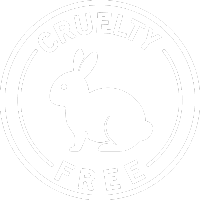How dirty tools could be sabotaging your hair—and how to fix it
When was the last time you cleaned your hairbrush? If you’re like most people, it’s been a while—if ever. While we often focus on shampoo quality, scalp treatments, and styling products, the tools we use daily are often overlooked.
But here’s the truth: your hairbrush can harbor more bacteria than a bathroom faucet. And if you’re brushing clean hair with a dirty tool, you might be undoing all your haircare efforts without even realizing it.
This spring, go beyond surface-level decluttering. It’s time to give your brushes and combs the deep clean they deserve.
What’s Lurking in Your Hairbrush?
Hairbrushes are a magnet for:
-
Dead skin cells
-
Product residue (like dry shampoo, oils, creams)
-
Natural oils and sebum from the scalp
-
Dust and environmental pollutants
-
Lint, debris, and yes—bacteria and fungi
A study published in the Journal of Clinical Microbiology found that everyday grooming tools like brushes can contain Staphylococcus aureus, E. coli, and even yeast and mold spores, especially in damp or rarely cleaned environments.
What Happens When You Keep Using a Dirty Brush?
-
Bacteria can transfer back to your clean hair and scalp, potentially contributing to irritation or scalp imbalances.
-
Excess oil and product buildup on the bristles can make your hair appear greasy or flat—even after washing.
-
Breakage increases as clogged bristles tug and snag strands.
-
If you suffer from dandruff, dermatitis, or scalp acne, dirty brushes may be part of the problem.
How Often Should You Clean Your Hairbrush?
Ideally:
-
Remove trapped hair: Every 2–3 days
-
Deep clean: Every 1–2 weeks for most hair types
-
Replace your brush: Every 6–12 months, depending on wear
If you use lots of styling products or have an oily scalp, more frequent cleaning is recommended.
How to Properly Clean Your Hairbrush
Step 1: Remove all hair
Use your fingers, a comb, or a pointed object (like the tail of a rat-tail comb) to pull out trapped strands.
Step 2: Soak and cleanse
Fill a bowl with warm water and a few drops of gentle shampoo or antibacterial soap.
For plastic brushes: Soak for 10–15 minutes
For wood or padded brushes: Dip only the bristles (avoid soaking the handle)
Step 3: Scrub
Use a toothbrush to scrub between bristles and at the base where buildup collects.
Step 4: Rinse thoroughly
Shake out excess water and let it air dry bristle-side down on a clean towel.
Tip: Never dry brushes with a hairdryer—it can warp the bristles or melt glue inside.
Brush Maintenance Tips
-
Avoid brushing wet hair unless using a brush designed for that purpose (like a detangling wet brush).
-
Don’t share brushes—bacteria and scalp conditions can spread easily.
-
Keep brushes in a dry, clean place—not in steamy bathrooms or under piles of products.
-
If your brush smells musty or has discolored buildup, it’s time for a deep clean or replacement.
Final Thoughts: Clean Tools = Cleaner Hair
Just like you wash your pillowcase or makeup brushes, your hair tools deserve the same level of attention. A simple 10-minute cleaning routine can protect your scalp health, reduce breakage, and help your products work better.
This spring, don’t just detox your products—detox your brushes too. Your hair (and scalp) will thank you.











